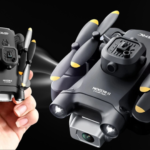Maintaining a lush, green lawn requires time, effort, and most importantly, the right tools. At the heart of every great-looking yard is a dependable lawn mower. Whether you’re a weekend gardener or a seasoned lawn care enthusiast, choosing the best lawn mower can greatly influence the ease and outcome of your yard work. With so many types and features available on the market, it’s essential to know what to look for to find the mower that fits your needs perfectly.
1. Start with Your Lawn Size
One of the most important factors in selecting a lawn mower is the size of your lawn. A small, compact yard doesn’t need the same power or cutting width as a large, open one.
- Small Lawns (Under ¼ Acre): A manual reel mower or a small electric push mower is typically sufficient. These options are cost-effective, environmentally friendly, and easy to store.
- Medium Lawns (¼ to ½ Acre): Battery-powered or corded electric mowers are a good choice for medium-sized lawns. If you’re dealing with more complex terrain or thicker grass, a gas-powered push mower may offer better performance.
- Large Lawns (Over ½ Acre): For expansive areas, consider a self-propelled mower or even a riding lawn mower. These mowers save time and energy and are built to handle tougher grass and longer mowing sessions.
2. Understand the Different Types of Lawn Mowers
Each lawn mower type offers distinct benefits, and knowing how they work can help you make an informed choice.
- Manual Reel Mowers: These classic, eco-friendly options don’t use gas or electricity. They are great for small, flat lawns and provide a clean, scissor-like cut. However, they require more physical effort and may struggle with tall or thick grass.
- Electric Corded Mowers: Lightweight and low-maintenance, corded mowers are ideal for small to medium lawns. However, the cord can limit mobility and may be inconvenient in yards with obstacles or limited access to power outlets.
- Cordless Electric Mowers (Battery-Powered): These offer the freedom of movement and are quieter than gas mowers. Modern battery-powered mowers are powerful enough to handle most medium lawns and are easy to store and maintain.
- Gas-Powered Mowers: Known for their power and durability, they are suitable for larger lawns or thick, tough grass. They’re available in push or self-propelled versions, but they do require regular maintenance and fuel storage.
- Self-Propelled Mowers: These take the hard work out of mowing by moving forward on their own. You guide the mower’s direction. They’re excellent for hilly or uneven lawns and reduce strain on the user.
- Riding Mowers and Lawn Tractors: These are best for large properties and make mowing much faster. They come with various attachments and can sometimes be used for more than just mowing, such as hauling or snow removal.
3. Key Features to Consider
Modern lawn mowers come packed with features designed to make mowing more efficient and enjoyable. Here are a few worth considering:
- Cutting Height Adjustment: The ability to raise or lower the cutting blade allows you to adapt to changing grass conditions and seasonal needs.
- Mulching Capabilities: Some mowers can mulch clippings back into the lawn, providing nutrients and reducing cleanup.
- Grass Clipping Disposal: Options include side discharge, rear bagging, and mulching. Choose based on how you prefer to manage your clippings.
- Starting Mechanism: Electric push-button starts are more convenient than traditional pull cords, especially for those with limited strength or mobility.
- Ergonomic Handles & Maneuverability: A mower with a comfortable grip and adjustable handle height makes a big difference during long mowing sessions.
- Storage: If you’re short on space, look for foldable designs or vertical storage options.
4. Consider Terrain and Grass Type
The condition of your yard also plays a big role in choosing the right mower.
- Flat Lawns: Most mower types will perform well on even terrain.
- Hilly or Sloped Yards: A self-propelled or lightweight cordless mower with good traction will reduce the effort needed to mow safely and evenly.
- Thick, Dense Grass or Weeds: A more powerful gas mower may be necessary to cut through thick patches efficiently.
5. Maintenance and Longevity
Maintenance needs vary depending on the mower type. Electric mowers (both corded and battery-powered) require minimal upkeep—typically just blade sharpening and battery care. Gas mowers, on the other hand, require oil changes, spark plug replacements, and fuel stabilization. Always check the manufacturer’s guidelines and determine if you’re comfortable with the maintenance tasks required.
Also, check for warranty coverage and the availability of replacement parts. Investing in a reputable mower with good customer support can save you trouble down the line.
6. Budget and Value
Lawn mower prices range widely, from under $100 for basic manual models to over $2,000 for high-end riding mowers. Think about your budget in relation to how often you mow, the size of your lawn, and how long you plan to use the mower. Sometimes spending a little more up front can save money on repairs or replacements in the future.
Conclusion
Choosing the best lawn mower is about finding the perfect match for your lawn, lifestyle, and preferences. With a thoughtful understanding of your yard’s needs and the mower options available, you’ll be well on your way to a healthier, better-looking lawn. Take your time, do a little research, and make sure your investment brings value, not just this season, but for years to come.














